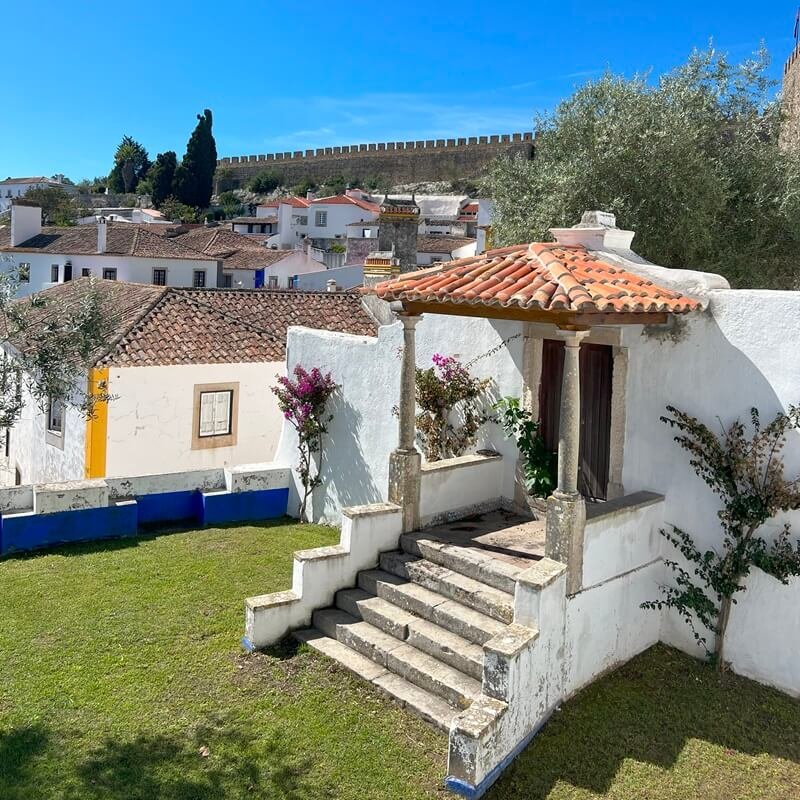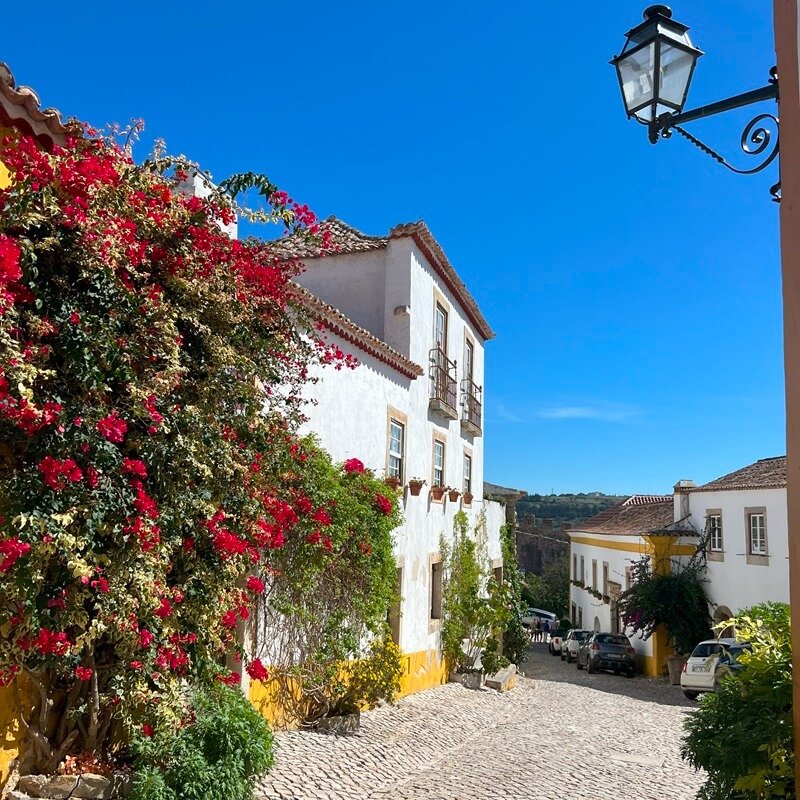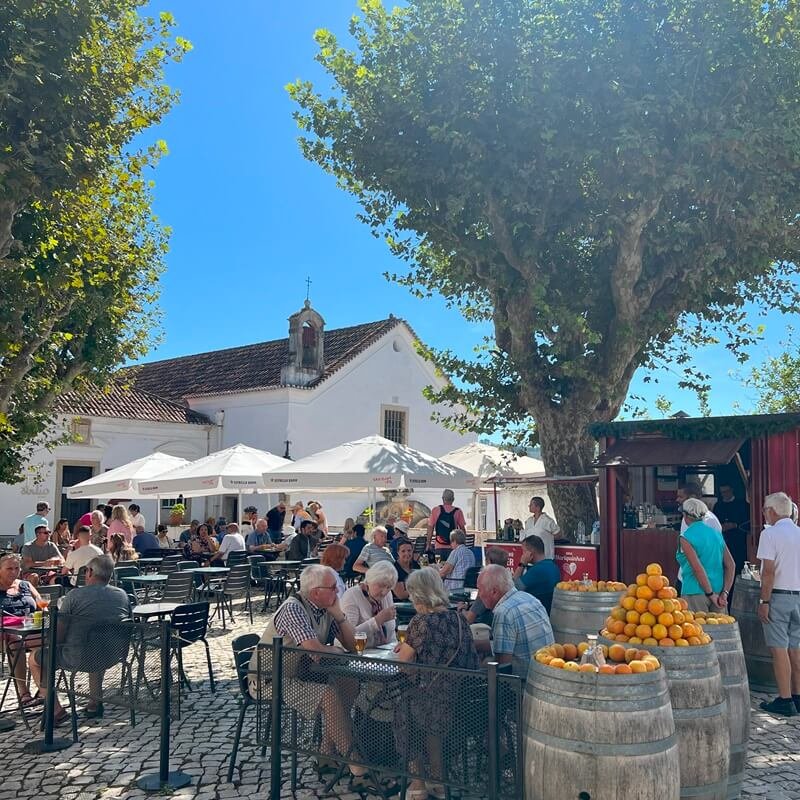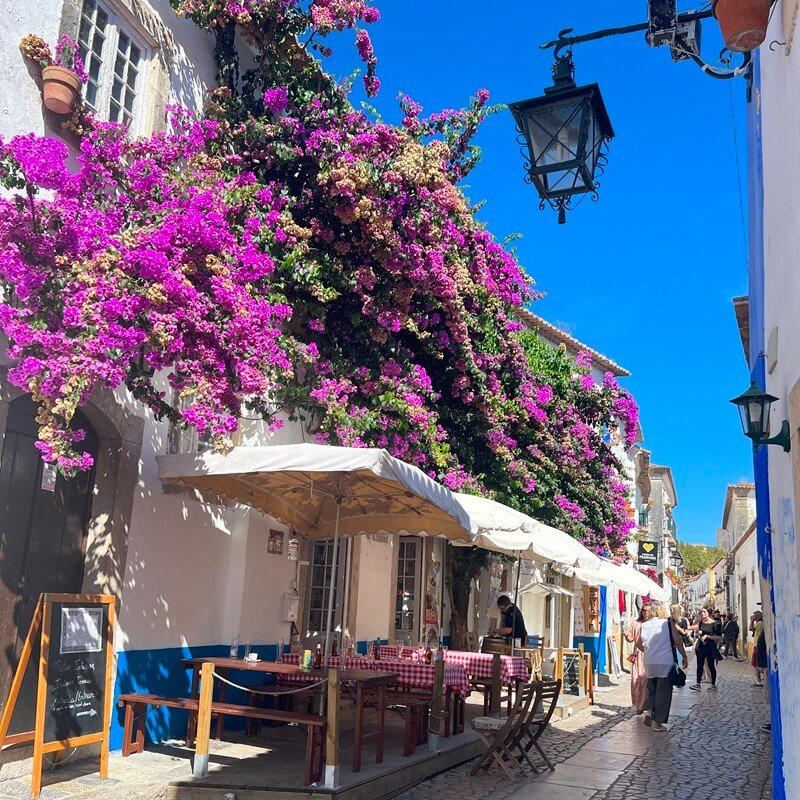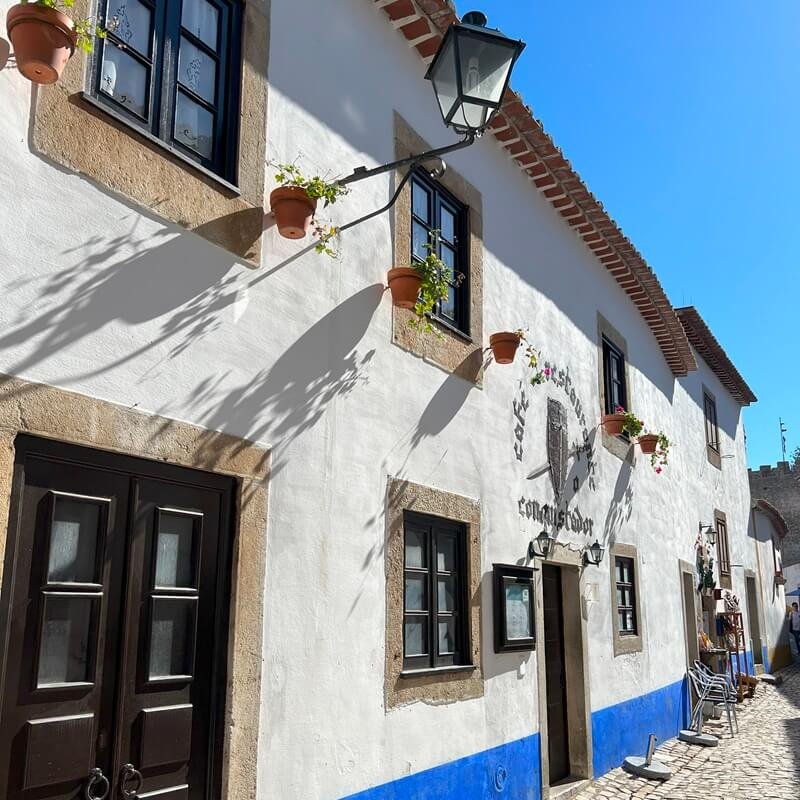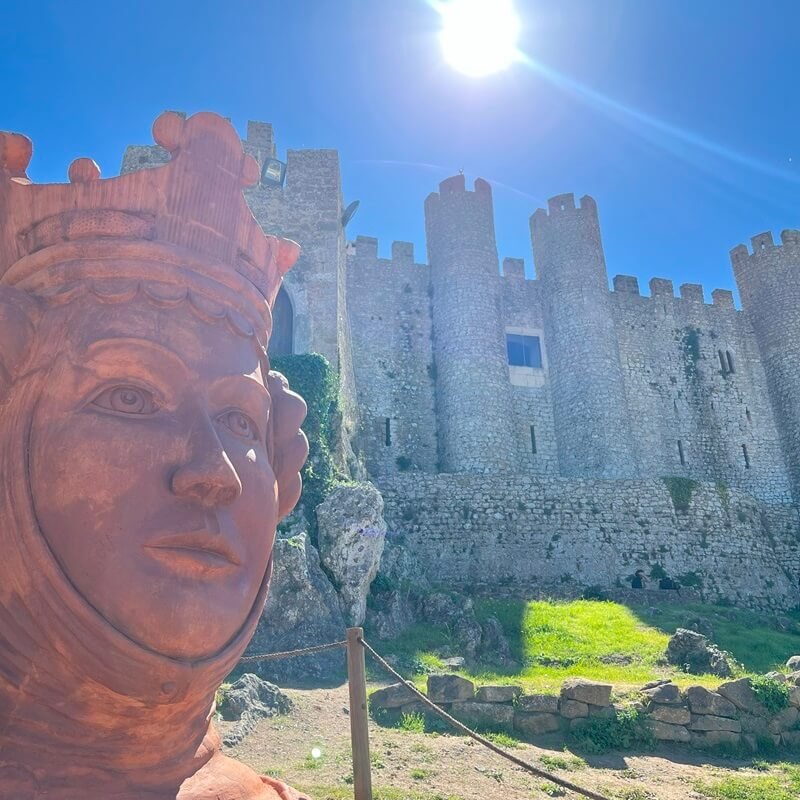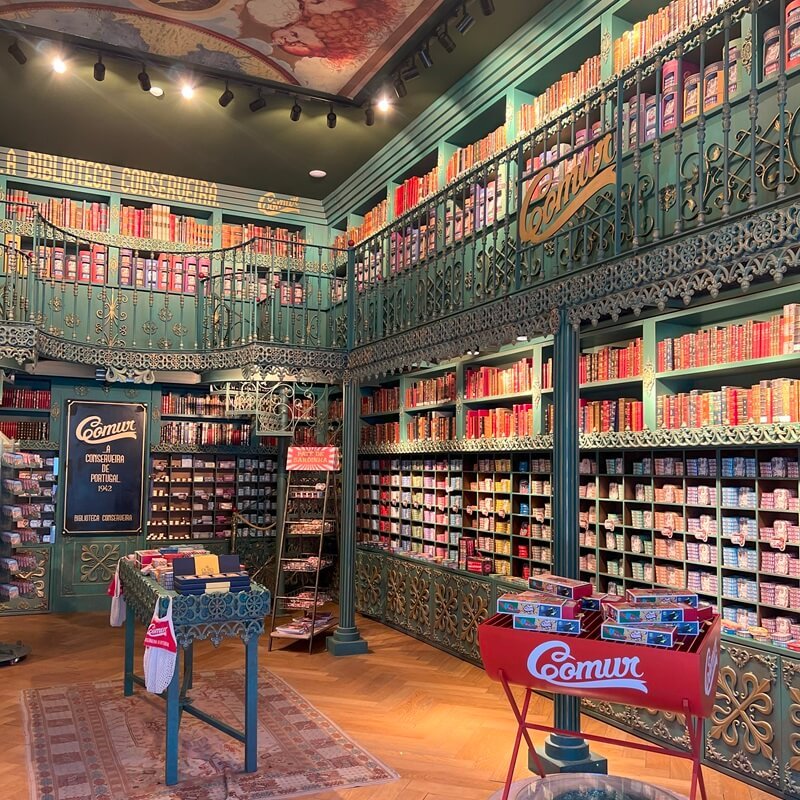Medieval town
in central Portugal
The history of Óbidos stretches back to ancient times. Originally settled by the Celts, it later came under Roman rule and became an important town due to its strategic location near the Atlantic coast. The name “Óbidos” itself is derived from the Latin word “oppidum,” meaning citadel or fortified city.
Short history of Obidos
In 1282 King Dinis gifted the town to his queen, Isabel of Aragon, as a wedding present. From then on, it became part of the royal estate and was often referred to as the “Wedding Town” or “Queen’s Town.” For centuries, Óbidos was a favoured retreat for Portugal’s queens, who contributed to its development, adorning the town with churches, gardens, and beautiful architecture.
In the 8th century, Óbidos fell under Moorish control, and it was during this period that the town’s impressive fortifications were developed. In 1148, King Afonso I of Portugal (Afonso Henriques) recaptured Óbidos during the Christian Reconquest, and it became a significant stronghold in the early formation of the Portuguese kingdom.
The town flourished during the medieval period, and its architecture, including the imposing Castle of Óbidos, was expanded. Today, the castle dominates the town and is one of the best-preserved medieval fortresses in Portugal.
Throughout history, Óbidos remained a small but culturally rich town. Its whitewashed houses adorned with flowers, narrow cobbled streets, and medieval walls transport visitors back in time. The Church of Santa Maria, with its Renaissance altarpiece and azulejo tiles, and the Aqueduct of Óbidos, built in the 16th century, reflect its deep historical and artistic heritage.
Óbidos is also famous for its literary and artistic festivals, including the Óbidos International Literary Festival and the annual Medieval Fair, where the town is transformed into a lively celebration of its medieval past. Obidos is one of the country’s most picturesque and historically significant destinations
